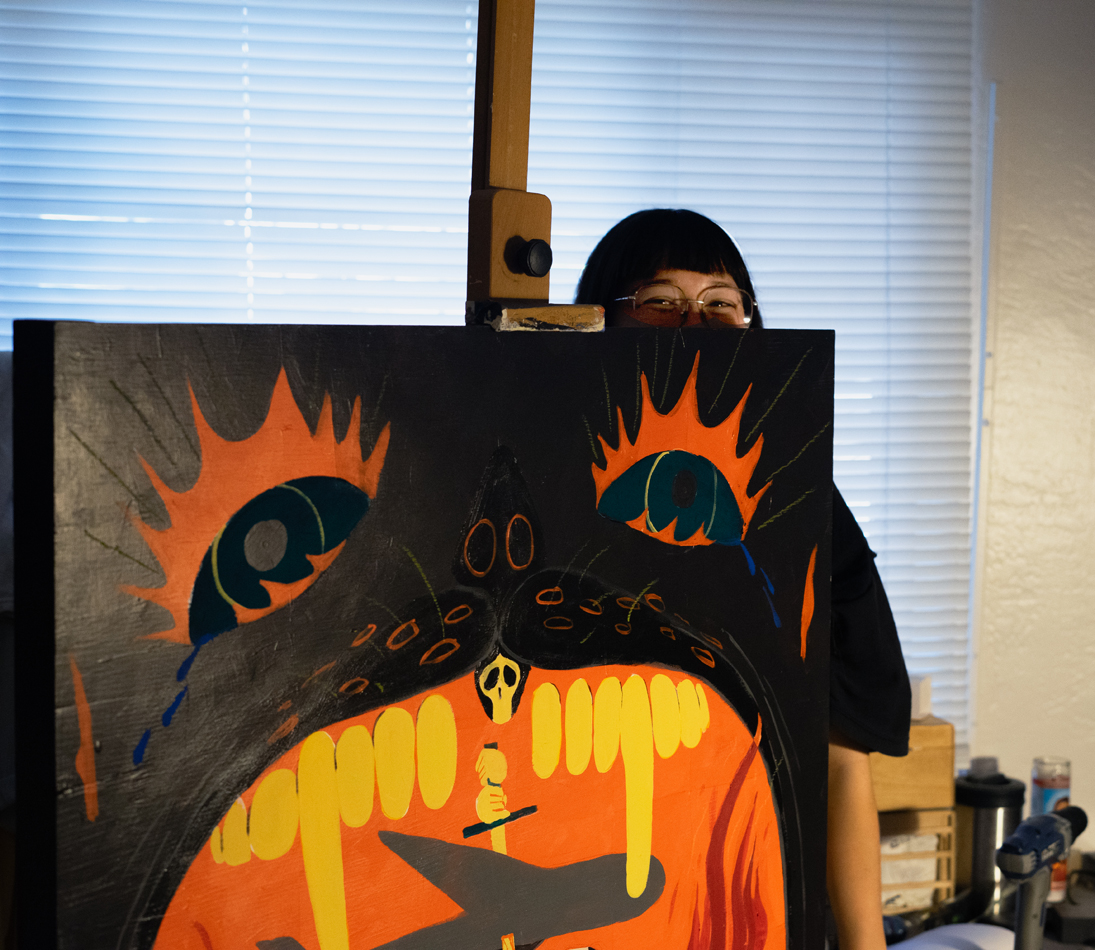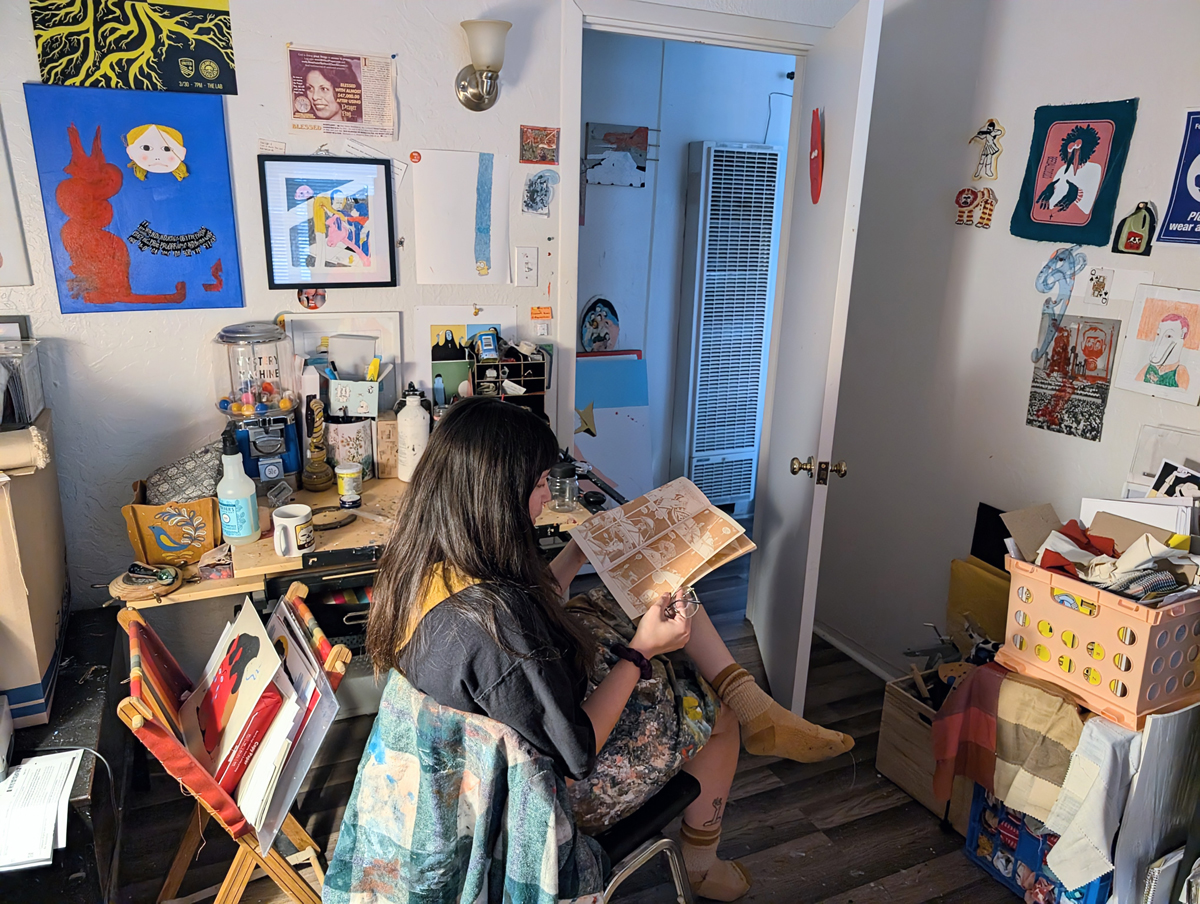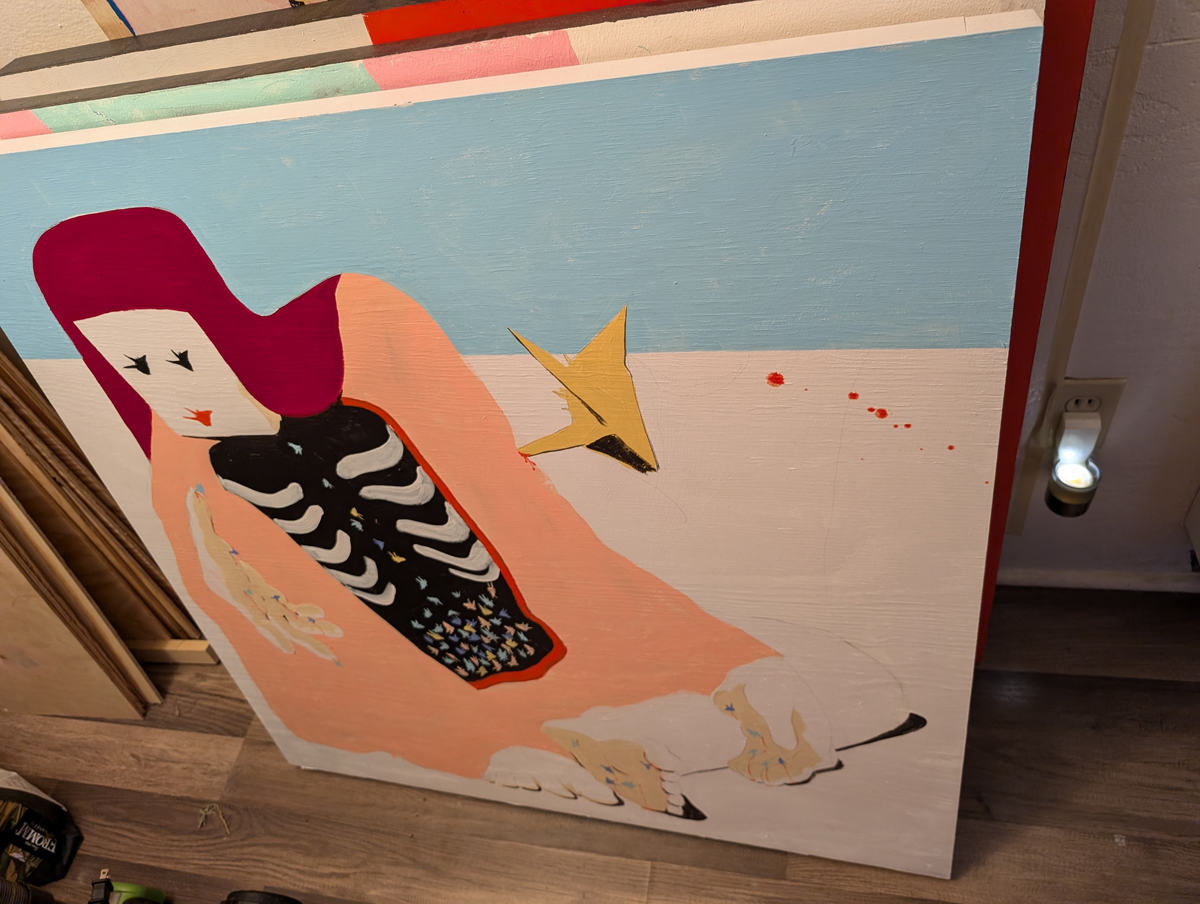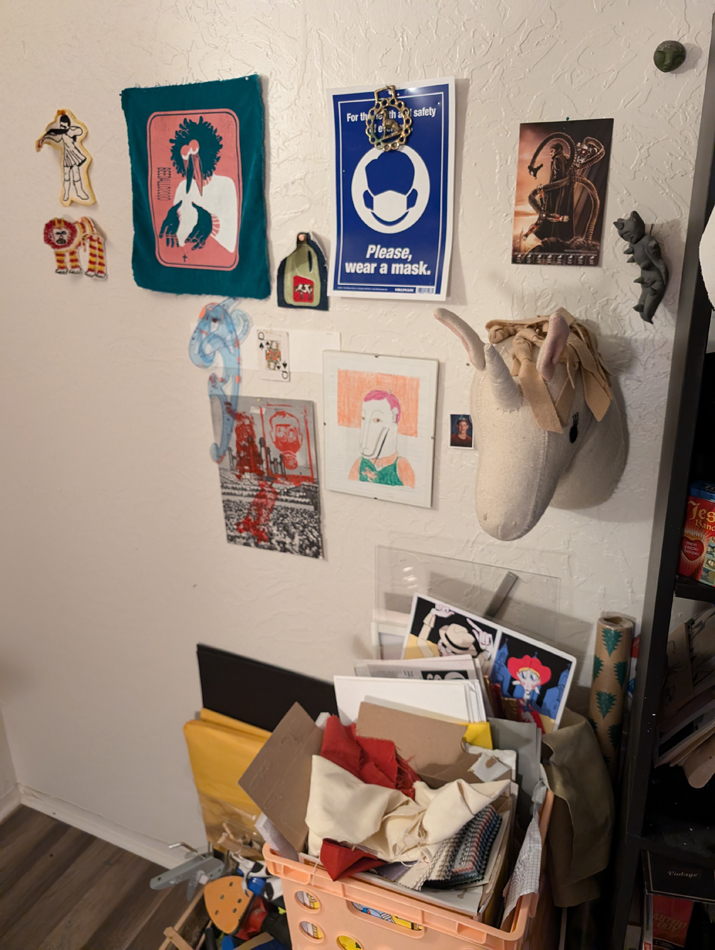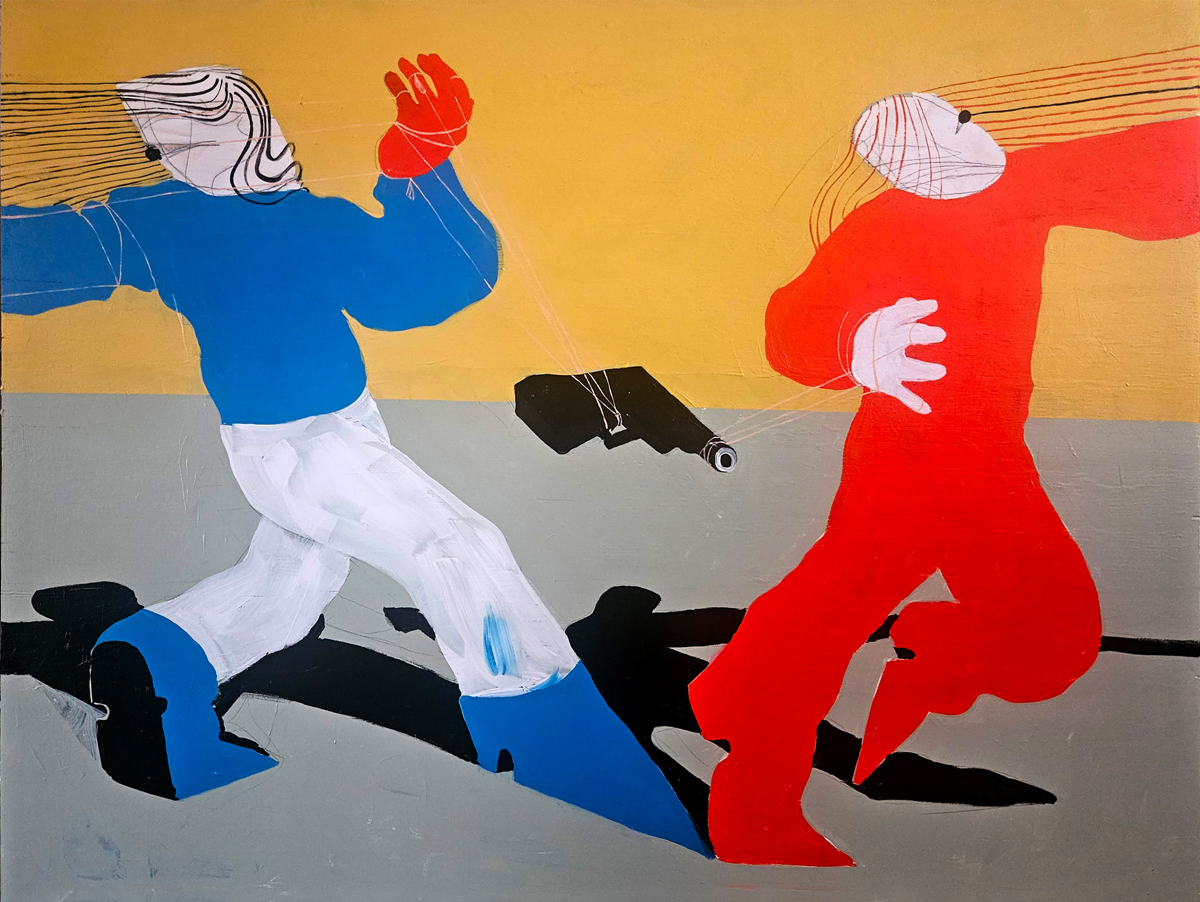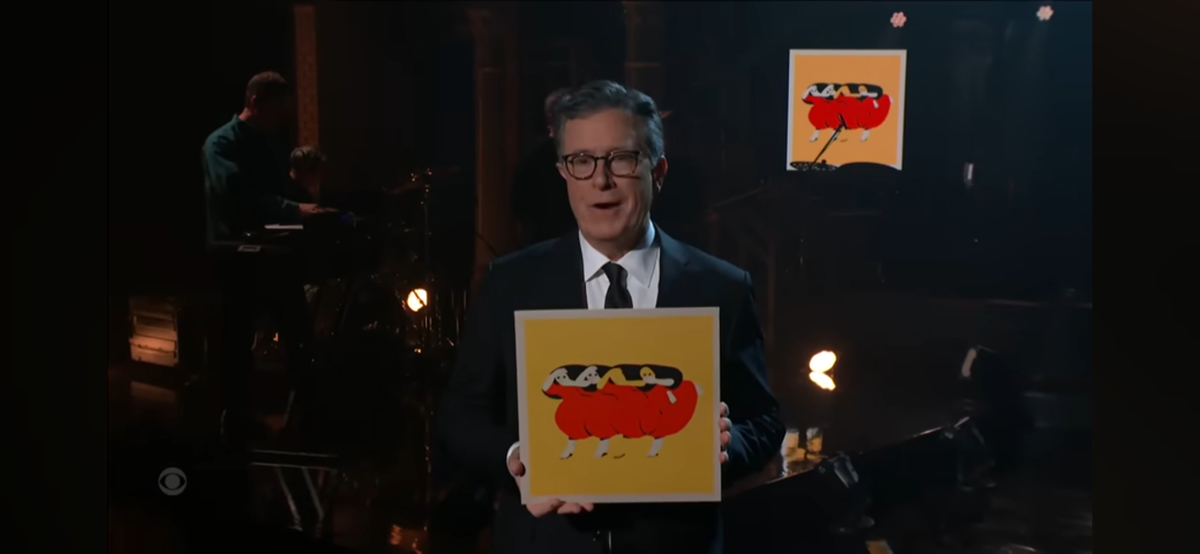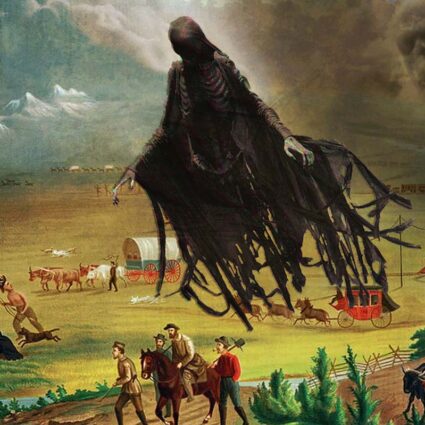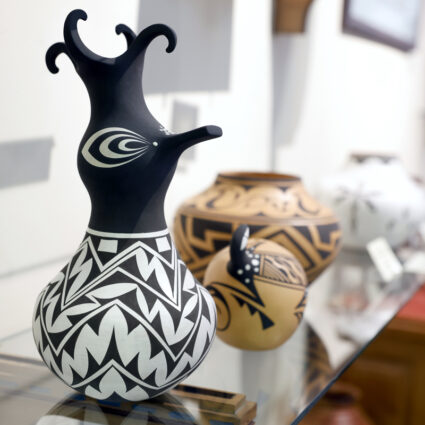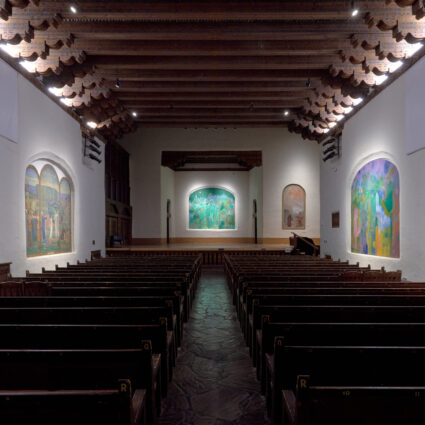New Mexico-born and Albuquerque-based artist Beedallo on staying elusive, spilling guts on canvas, and eavesdropping at art openings.

If you’ve seen Beedallo’s illustrations, drawings, paintings, and, more recently, sewn fabric sculptures, their distinctive use of bold colors, spurts of giallo-film-style-red-paint blood, and characters with close-set, small-pupiled eyes in an otherwise faceless face, allow you to identify their style quickly. However, the somebody toiling behind a white studio door demarcated with a frowning red devil face might not be as easily pinpointed. Although unashamed of dreaming up unsettling scenes of beauty and gore, the Albuquerque-based artist would prefer to remain relatively anonymous.
Thus, when I ask Beedallo their preferred pronouns, they shrug. They are just Beedallo, a title derived from parts of the artist’s first, middle, and last names. Whatever Beedallo’s social markers are, they don’t want the viewer to fixate on them while regarding their artwork. In their view, knowing how the artist presents in terms of gender, ethnicity, and so on will only taint the work with preconceptions.
Yet, their pieces gesture to private stories, rumors, dreams, and subjectivities anchored in and shaped by New Mexican regionalism. Teeming with irreverent religious iconography, Beedallo’s compositions perpetuate Southwest spirituality and folklore. They also betray hints of a childhood situated in a rural, tight-knit community in Valencia County, central New Mexico, where they would assemble for the matanza, a winter feast of roast pig, and Good Friday pilgrimages to the shrine and crosses atop Tomé Hill along the El Camino Real de Tierra Adentro National Historic Trail.
In a word, Beedallo’s art is sanguinary.
The playful titles of their pieces, which the artist describes as “poems,” highlight Beedallo’s wit and absurdity. Death of a Young Man with Astigmatism shows a blood-soaked Jesus held up by a swirling mass of robed devotees; Light Pollution portrays an emaciated, fanged airplane sphinx fringed with beads of blood, pacing an airport runway; Rapture represents a person propelled off a swing into the sky while another figure reclines in front of the swing set, gazing at the shadow falling over their hand.
In a word, Beedallo’s art is sanguinary. Martyrs or dubious saints suffer from self-inflicted wounds and battle bulls, dogs, and creatures more fantastical. Knives, daggers, and swords drip blood in perfect droplets. Everything hemorrhages in Beedallo’s world, including airplanes, guns, and circus animal cookies.
The violence inherent to the farm life they endured in Los Chavez, New Mexico, partly accounts for the campy viscera splayed on their canvases. Growing up religious also indelibly marked their imagination with visions of hellfire and the grisly Passion, the narrative detailing Jesus’s suffering and crucifixion.
After I ask Beedallo about the earliest artwork they could remember creating, they tell me about shocking their second-grade teacher with a drawing of hell. Interestingly, a new work entitled Hellmouth prominently sits on an easel in their studio, which frames a flame-licked scene of an angel stabbing an airplane in the maw of a sharp-toothed, black-and-orange beast.
“I’ve always enjoyed criticizing religion,” Beedallo says. “My dad was Catholic, and my mom converted to the evangelicalism of the Calvary Church, so I attended catechism and services at Calvary at the same time.”
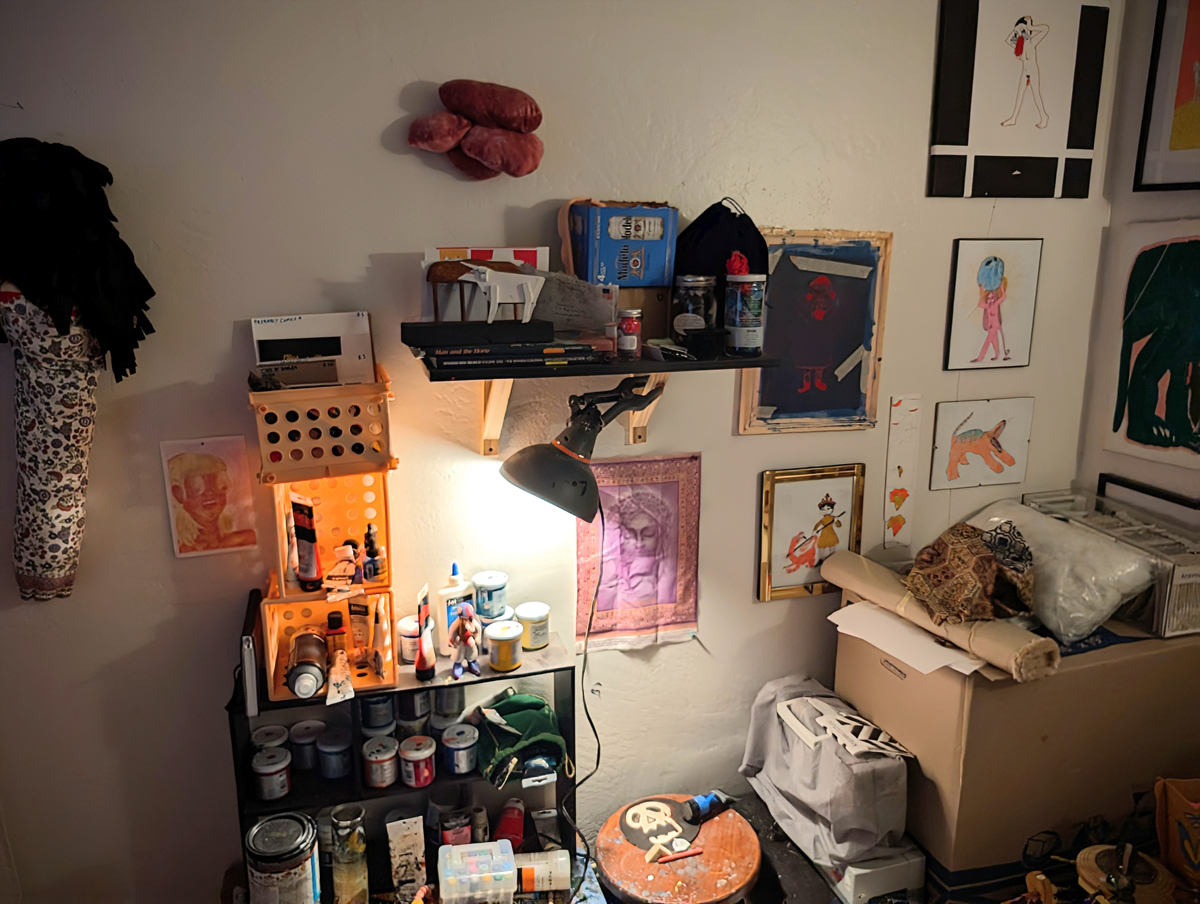
Elaborating on how religion ravaged New Mexico during Spanish colonialism and beyond, Beedallo also acknowledges the aesthetic quality of this bloodstained saga. “There’s a glee in all New Mexican religious depictions,” they impart. “You’re supposed to glorify and like the sacrifice.”
I prod them for more details, hungry for the specific events leading to the creation of each of their pieces. Again, they shrug through my questions, insisting that each work requires audience participation to come to its meaning.
“I like when the piece relies on the viewer for it to be complete, letting them decide what happens next,” Beedallo explains, adding that they usually illustrate something on the brink of happening–right before the climax. “Moments that hold a lot of tension interest me most,” they note.
They also take pleasure in anonymously weaving through the crowds at their own gallery openings, listening to what people say when they don’t realize that they are in earshot of the artist.
If I had drawn this, the FBI would be at my door.
At their most recent exhibition, Ditch Water, at Lapis Room Gallery in Albuquerque’s Old Town, Beedallo recalls one person studying That’s Fair, a painting of a peach unicorn stabbing a figure in white with its horn as the figure releases a sword into the back of the unicorn’s neck. The person remarked, “If I had drawn this, the FBI would be at my door.”
Another spectator, standing in front of a soft sculpture of a dismembered bull, commented, “I am worried about the person making all of this.”
Beedallo doesn’t deflect as they acknowledge that suffering and anxiety are the prevailing topics of their oeuvre, mustering the same emotions from onlookers. In the works from Ditch Water, the artist amplifies these affects while touching on the novelty and drama of growing up in an isolated agricultural town.
The title of the show refers to the ditches or irrigation canals that run through Valencia County like its “veins,” as Beedallo describes them, circulating the province’s lifeblood–the water sustaining the crops–along with local history, ghost stories, and gossip. One painting from the show, A Dream of Somewhere Else, presents a black-hooded figure reclined on a bridge over one such water-filled ditch, extending their arm out to another figure, bobbing in the canal, to light a cigarette in their mouth.
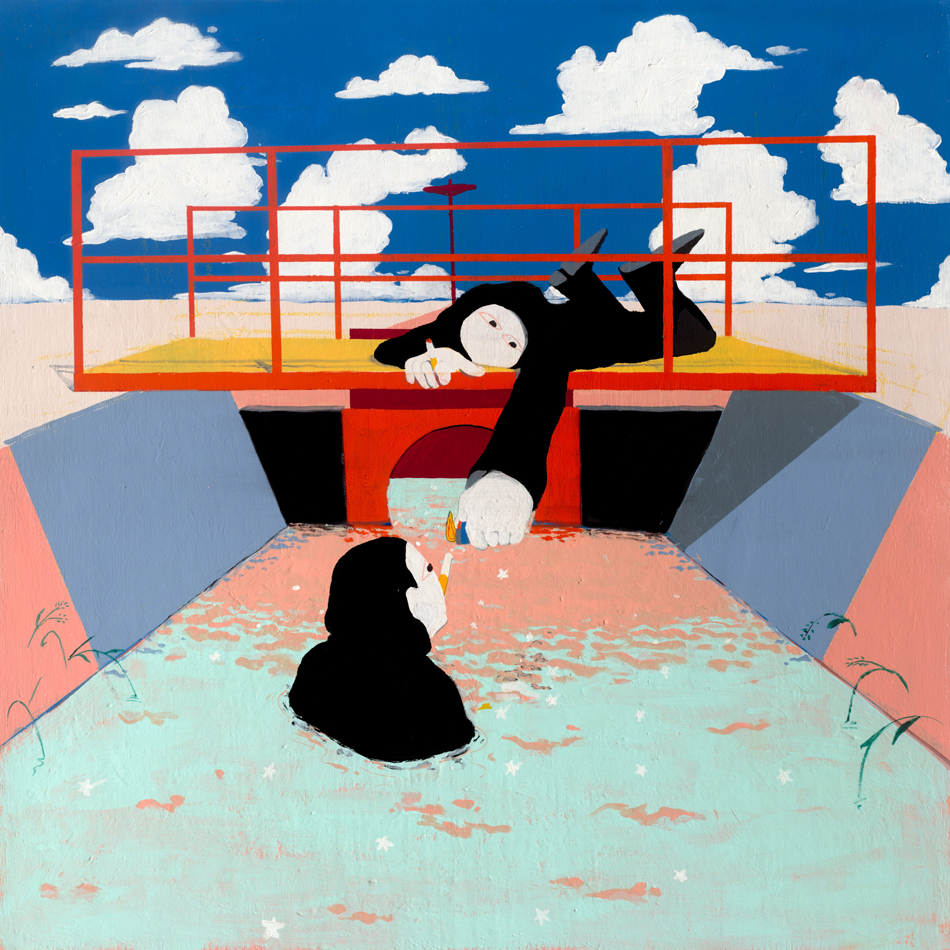
“My dad and everyone in his family smokes Marlborough Reds,” Beedallo reveals when I ask them about the presence of cigarettes in their work, including the cigarette earrings I recall them wearing at the Ditch Water opening reception.
Touring their studio, I find elements of the sacred, profane, and zany harmoniously mixed. On one wall, a photo showing a violet-hued Jesus in a crown of thorns closes his eyes, framed by ornate designs.
“That’s a prayer rug I received in the mail,” Beedallo explains.
On another wall above a desk, a yellow and black design of two soccer players hangs with the New Mexico United professional soccer team logo, which United commissioned the artist to make.
If you ever attend an opening reception for Beedallo, whisper your reactions loudly.
Beedallo requests to remain partially concealed when I ask to take their picture, so we scan their studio for a disguise or barrier. They briefly consider a mask they sewed that hangs on the wall, looking like a flowery elephant trunk under a wig of black felt strips, but then they pivot to their bookshelf, pulling out a Gumby comic book. As a trained illustrator who loves animation and cartooning, citing everything from Mobius, Henry Darger, Genndy Tartakovsky, and Soviet-era Russian animators such as Yuri Norstein as influences, the comic book was the perfect partial disguise.
Before departing, I pause to contemplate the excess from their studio that spills into the hallway. A painting of a character with copper hair and a cavity in their chest, revealing their ribs and a belly full of goatheads—also known as puncturevines, an all-too-familiar wounding variety of weed—leans against the wall. The thorny burrs pierce the figure’s hands and feet while a giant goathead appears to her right. Farther afield, a few droplets of red paint splatter the minimal white landscape. Again, this piece stirs up musings about local identity and a life never separated from the presence of pain and reminders of death.
Goathead, along with Hellmouth, appears in a show at Revolt Gallery in Santa Fe, which opened October 5 and runs through December 9. If you ever attend an opening reception for Beedallo, whisper your reactions loudly. The artist finds your conclusions about their artwork just as, if not more, interesting than their own.
